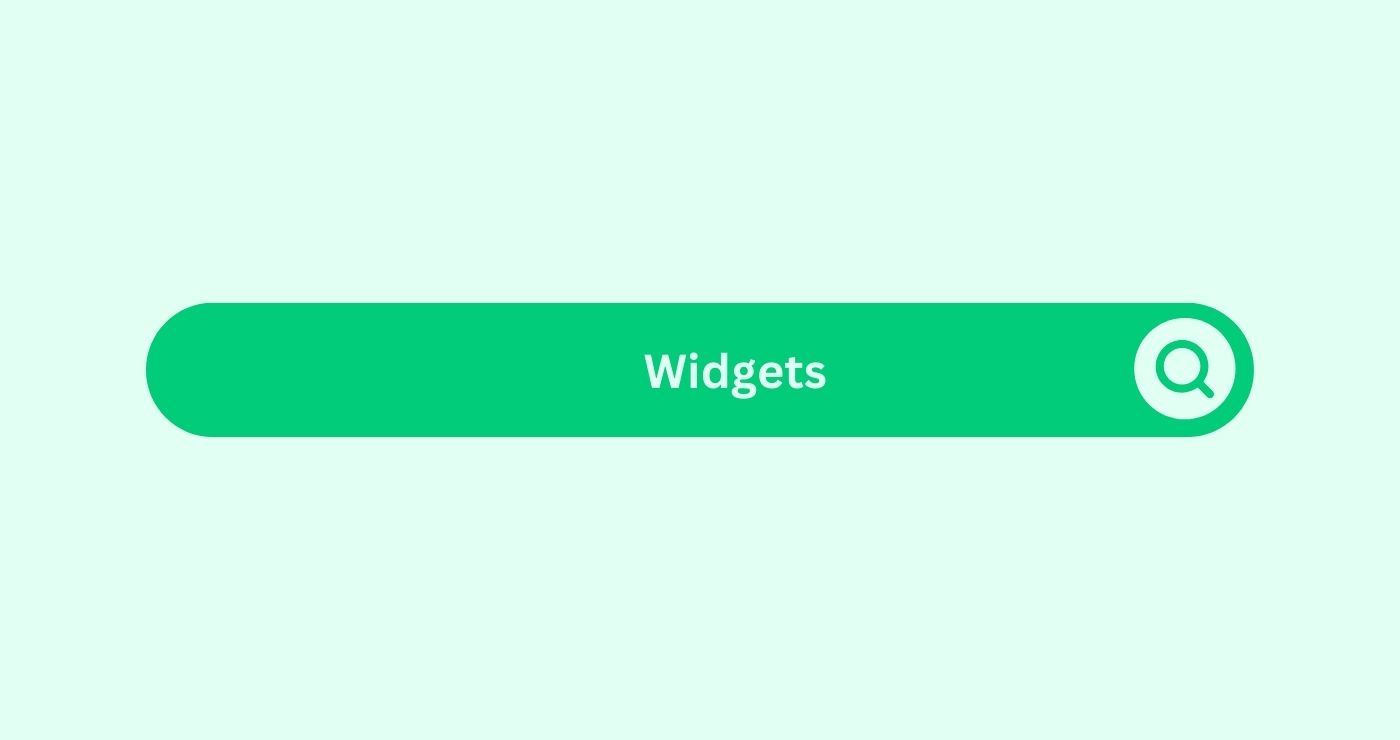Definition
Widgets are small, dynamic applications or tools embedded into web pages to provide specific functionalities or content. These mini-applications can display real-time data, offer interactive features, or provide additional resources to website visitors. In the SEO space, widgets can enhance user experience, increase engagementDefinition Engagement in content marketing refers to the deg..., and improve overall site performance. Common examples of widgets include weather updates, stock tickers, social mediaWhat is Social Media? Social media refers to online platform... feeds, and search bars. By integrating widgets, websites can offer a richer, more interactive experience, which can positively impact user satisfaction and search engine rankings.
Widgets are typically built using HTML, CSS, and JavaScriptJavaScript is a versatile programming language that plays a ..., and can be easily added to web pages by embedding a small piece of code. They can pull content from external sources or databases, ensuring the displayed information is always current and relevant. From an SEO perspective, properly implemented widgets can reduce bounce rates, increase time on site, and improve overall user engagementDefinition Engagement in content marketing refers to the deg... metricsWhat are Metrics in the context of SEO? Metrics in SEO refer..., all of which are important factors for search engine algorithms.
How You Can Use
Imagine you run a travel blog and want to provide your visitors with up-to-date information on popular destinations. You can integrate a widget that displays live weather updates for different cities around the world. By embedding this widget on your destination pages, you enhance the user experience by providing relevant and real-time information that your readers find useful. This not only keeps your audienceDefinition The term "Audience" refers to the group of indivi... engaged but also encourages them to spend more time on your site, exploring other content.
To implement this weather widget, you would select a reliable weather data provider and obtain the necessary code to embed on your website. This code might include parameters to customize the widget’s appearance and functionality to match your site’s design. By regularly updating your widgets and ensuring they remain functional, you maintain a high level of user satisfaction and engagementDefinition Engagement in content marketing refers to the deg....
Calculations and Formulas
When assessing the impact of widgets on your website’s SEO, consider key performance indicators (KPIs)Definition Key Performance Indicators (KPIs) in social media... such as average session duration, bounce rateDefinition Bounce Rate in social media marketing refers to t..., and user interaction rate. These metricsWhat are Metrics in the context of SEO? Metrics in SEO refer... help gauge the effectiveness of widgets in enhancing user experience and engagementDefinition Engagement in content marketing refers to the deg....
Average Session Duration = Total Duration of All Sessions / Number of Sessions
Bounce RateDefinition Bounce Rate in social media marketing refers to t... = (Single-Page Sessions / Total Sessions) * 100
User Interaction Rate = (Total Interactions with Widget / Total Widget ImpressionsDefinition Impressions track campaign effectiveness for digi...) * 100
These formulas provide insights into how well widgets are performing and their contribution to overall SEO goalsIn the SEO space, "Goals" refer to specific, measurable obje....
Key Takeaways
- Enhanced User Experience: Widgets provide real-time, relevant information, making the browsing experience more engaging and useful.
- Increased EngagementDefinition Engagement in content marketing refers to the deg...: Interactive widgets can capture user interest, leading to longer session durations and reduced bounce rates.
- SEO Benefits: By improving user engagementDefinition Engagement in content marketing refers to the deg... metricsWhat are Metrics in the context of SEO? Metrics in SEO refer..., widgets can contribute positively to search engine rankings.
- Customisation: Widgets can be tailored to match the design and functionality needs of your website, ensuring seamless integrationDefinition Integration in the SEO Glossary combines tactics ....
- Real-Time Updates: Widgets can pull data from external sources, ensuring your content remains current and relevant to users.
FAQs
What are widgets?
Widgets are small, dynamic applications embedded in web pages to provide specific functionalities or content.
How do widgets enhance SEO?
Widgets improve user engagementDefinition Engagement in content marketing refers to the deg... and experience, which can positively impact SEO metricsWhat are Metrics in the context of SEO? Metrics in SEO refer... like bounce rateDefinition Bounce Rate in social media marketing refers to t... and session duration.
Can widgets display real-time data?
Yes, widgets can pull content from external sources to display real-time information.
What types of widgets are commonly used?
Common widgets include weather updates, stock tickers, social mediaWhat is Social Media? Social media refers to online platform... feeds, and search bars.
How do I integrate a widget into my website?
Integrate a widget by embedding a small piece of code provided by the widget developer into your web page.
Do widgets affect website load time?
Poorly optimized widgets can affect load time, but most modern widgets are designed to load asynchronously to minimize impact.
Can I customize widgets to match my website design?
Yes, many widgets offer customization options for appearance and functionality.
Are widgets mobile-friendly?
Most modern widgets are designed to be responsive and work well on mobile devices.
What metrics should I track to measure widget performance?
Track metricsWhat are Metrics in the context of SEO? Metrics in SEO refer... such as average session duration, bounce rateDefinition Bounce Rate in social media marketing refers to t..., and user interaction rate.
Can widgets help reduce bounce rate?
Yes, by providing engaging and relevant content, widgets can help reduce bounce rateDefinition Bounce Rate in social media marketing refers to t... and encourage users to explore more of your site.




